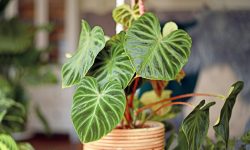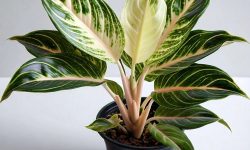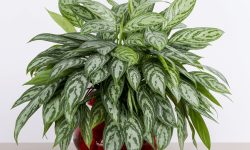Poinsettias are among the most beloved holiday plants, prized for their vibrant red, white, or pink bracts that brighten up homes and gardens during the festive season. Despite their association with Christmas, these tropical plants can thrive well beyond the holidays when given proper attention. Understanding how to care for poinsettias indoors and outdoors the right way can ensure long-lasting beauty and even reblooming year after year. With a little knowledge and ongoing care, these plants can become a permanent fixture in your indoor decor or outdoor garden.
Many people mistakenly discard poinsettias after the holidays, thinking they’re short-lived. However, with the right care, these Euphorbia pulcherrima plants can live for many years, thriving in both container and garden settings. Learning how to balance light, water, temperature, and seasonal needs is essential to maintain a healthy and attractive poinsettia in any environment.
This comprehensive guide will walk you through all aspects of poinsettia care—whether you’re tending them on a sunny windowsill or planting them in your backyard. From choosing the perfect location to encouraging future blooms, you’ll gain the confidence to nurture your poinsettia like a pro.
Understanding the Nature of Poinsettias

Poinsettias originate from Mexico and Central America, where they grow as perennial shrubs in warm climates. In their natural habitat, they can reach heights of up to ten feet, boasting lush green leaves and showy colored bracts surrounding small yellow flowers. While commonly grown indoors during winter in cooler regions, they can also thrive outdoors in USDA zones 9 through 11 where frost is rare.
The colorful parts of the poinsettia often mistaken for petals are actually modified leaves called bracts. These bracts change color in response to the plant’s natural photoperiod, or exposure to daylight and darkness. The actual flowers are the tiny yellow buds at the center, known as cyathia. Once these start to fade, the blooming cycle has ended.
Recognizing the botanical background of the poinsettia helps gardeners appreciate its needs. As a photoperiod-sensitive plant, it requires specific lighting conditions to rebloom. Additionally, being tropical, it demands warmth and consistent humidity to flourish year-round.
Choosing the Ideal Location Indoors
When growing poinsettias indoors, location plays a key role in their health and vibrancy. These plants thrive in areas that receive bright, indirect sunlight for at least six hours daily. A south-, east-, or west-facing window typically provides adequate light without subjecting the leaves to harsh rays that can cause scorching.
It’s crucial to avoid placing poinsettias near cold drafts, heating vents, or fireplaces. Sudden changes in temperature and dry air can cause leaf drop and bract fading. They prefer a stable environment with temperatures between 65 and 75°F during the day and slightly cooler conditions at night.
In addition to temperature and light, humidity should be maintained at moderate levels. Indoor air can become dry during winter due to central heating, which may affect the plant’s appearance. Using a humidity tray or placing a bowl of water near the plant can help retain moisture in the air.
Watering and Feeding Your Indoor Poinsettia
Poinsettias are somewhat particular about their water needs. Overwatering is a common issue that leads to root rot, while underwatering can cause wilting and bract loss. It’s essential to maintain evenly moist soil without letting the plant sit in standing water. A good practice is to water thoroughly when the top inch of soil feels dry to the touch.
Always use containers with drainage holes to prevent water from accumulating at the bottom. If your poinsettia is wrapped in decorative foil, ensure the foil is either removed or pierced to allow excess water to escape. After watering, allow the pot to drain fully before placing it back on display.
Feeding poinsettias indoors during the blooming period is not typically necessary, as they come pre-fertilized from nurseries. However, once the blooming period ends and new growth begins, applying a balanced houseplant fertilizer every few weeks will promote healthy leaves and stems. Avoid over-fertilizing, especially during the dormant months when the plant requires less nutrition.
Encouraging Long-Term Growth Indoors
After the festive season, many poinsettias begin to decline if not cared for properly. To maintain them as year-round houseplants, it’s important to transition them into a maintenance phase. Once bracts fade, prune the plant back to around 4 to 6 inches in height. This encourages bushier growth and prevents legginess.
As daylight increases in spring, poinsettias will naturally resume active growth. At this time, repotting the plant into a slightly larger container with fresh potting soil can help refresh the root system. Gradually increase watering and resume fertilization to support the new growth cycle.
During summer, indoor poinsettias benefit from being moved outdoors to a shaded patio or sheltered garden bed. This exposure to fresh air and natural light helps the plant rejuvenate and strengthen its stems. Just ensure the transition is gradual to prevent shock from sudden environmental changes.
Outdoor Poinsettia Care in Warm Climates
In frost-free zones, poinsettias can thrive outdoors as part of a landscape planting. Select a location that receives morning sun and afternoon shade to protect the plant from scorching. Well-draining soil is essential, as poinsettias dislike sitting in soggy conditions.
When planting outdoors, dig a hole twice as wide as the root ball and amend the soil with compost to enrich its texture. After planting, water thoroughly and continue to water as needed to maintain consistent moisture, especially during dry spells. Mulching around the base can help retain soil moisture and suppress weeds.
Outdoor poinsettias appreciate a regular feeding schedule during the growing season. Apply a balanced granular fertilizer in spring and again in midsummer to support leaf development and overall vigor. As the plant matures, pruning may be needed in late spring or early summer to shape the shrub and promote fuller growth.
Seasonal Transitions and Reblooming Preparation
One of the most rewarding aspects of poinsettia care is encouraging the plant to rebloom for the following holiday season. This process begins in early autumn and requires controlled light exposure. Because poinsettias are short-day plants, they initiate bract coloration when exposed to extended darkness.
Starting around late September or early October, provide complete darkness for 14 hours each night while ensuring bright, indirect light during the day. This can be done by placing the plant in a dark closet or covering it with a box or blackout cloth every evening. Consistency is key, as missing even a single night of darkness can disrupt the blooming cycle.
Continue this regimen for eight to ten weeks. If successful, you’ll begin to notice the bracts changing color by mid to late November. Once bracts are fully colored, the plant can return to a well-lit area and resume normal care. By following this method, poinsettias can rebloom year after year, providing festive color without the need to purchase new plants.
Troubleshooting Common Poinsettia Problems
Even with proper care, poinsettias can sometimes exhibit signs of distress. Leaf drop is a common complaint, often triggered by environmental stress such as drafts, sudden temperature changes, or inconsistent watering. Adjusting the plant’s location and stabilizing its care routine can usually resolve this issue.
Fading bracts or lack of color vibrancy may indicate insufficient light or aging blooms. Once the blooming period ends, it’s natural for bracts to lose their color. In such cases, focus on post-bloom pruning and long-term care to prepare the plant for its next blooming cycle.
Poinsettias are also sensitive to pests such as whiteflies, spider mites, and fungus gnats. Regularly inspect the undersides of leaves for tiny insects or sticky residue. Washing the leaves with a mild soap solution or using insecticidal soap can help manage infestations without harming the plant.
Indoor vs. Outdoor Differences in Poinsettia Care
Caring for poinsettias indoors and outdoors involves different strategies, although both environments can support healthy growth when managed correctly. Indoor care typically emphasizes stable temperature, humidity control, and light exposure near windows. In contrast, outdoor care focuses on sunlight management, soil drainage, and protection from environmental extremes.
Indoors, you must monitor the plant more closely for signs of stress due to artificial environments. Temperature fluctuations from heaters or lack of humidity can cause problems not usually encountered outdoors. On the other hand, outdoor plants may be exposed to pests or extreme weather conditions, requiring different protective measures.
Ultimately, understanding the unique needs of poinsettias in each setting allows you to adjust care techniques accordingly. Whether kept as a potted houseplant or a garden shrub, the right attention to detail makes all the difference in their long-term success.
FAQ About How to Care for Poinsettias
How often should I water my poinsettia?
Poinsettias should be watered when the top inch of soil feels dry. Avoid letting the plant sit in standing water to prevent root rot.
Can poinsettias survive outside in winter?
Poinsettias can survive outdoors only in USDA zones 9 to 11. In colder regions, they should be brought indoors before frost arrives.
Why are the leaves on my poinsettia turning yellow?
Yellowing leaves may result from overwatering, underwatering, or exposure to drafts. Adjust watering habits and move the plant away from temperature extremes.
Do poinsettias need direct sunlight?
Poinsettias prefer bright, indirect sunlight. Direct sunlight can scorch the leaves, while too little light can reduce bract color intensity.
How can I get my poinsettia to bloom again?
To trigger blooming, provide 14 hours of complete darkness each night and bright light during the day for 8–10 weeks starting in early fall.
Final Thoughts on Poinsettia Care
Poinsettias are more than just seasonal decorations—they’re living plants that can thrive year-round with the right care. Whether you’re growing them indoors in a cozy living room or planting them outside in a temperate garden, understanding their specific needs leads to healthier plants and more vibrant displays.
By paying attention to light, temperature, water, and seasonal transitions, you can enjoy the beauty of poinsettias well beyond the holiday season. With dedication and consistency, it’s entirely possible to get your plant to bloom again next year, bringing back that festive charm without starting from scratch.
Whether you’re a beginner gardener or a seasoned plant enthusiast, mastering how to care for poinsettias indoors and outdoors the right way will reward you with vibrant foliage, colorful bracts, and the joy of nurturing something beautiful throughout the seasons.






